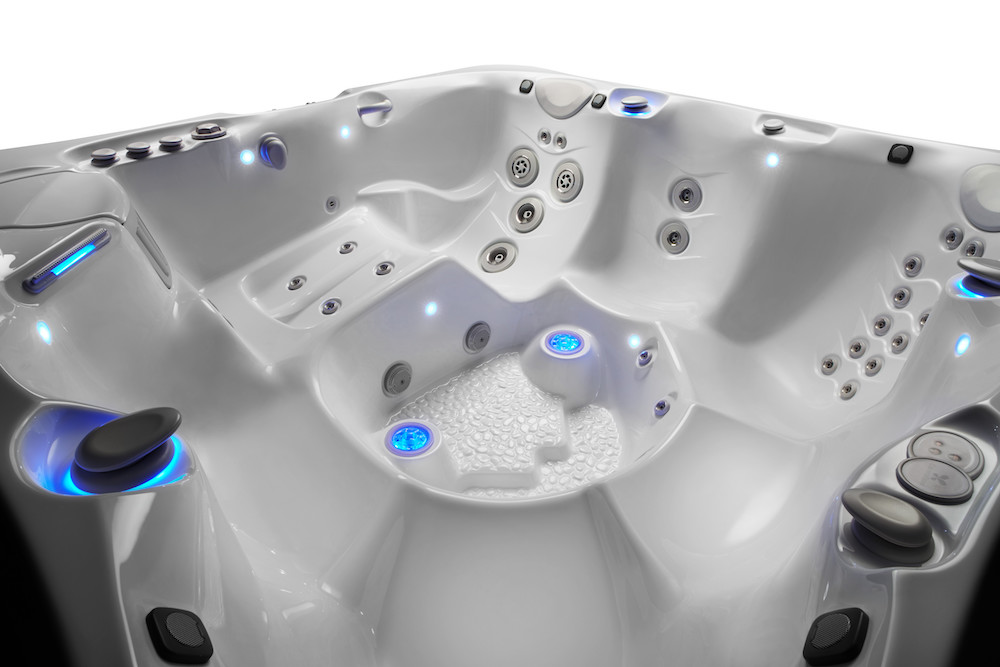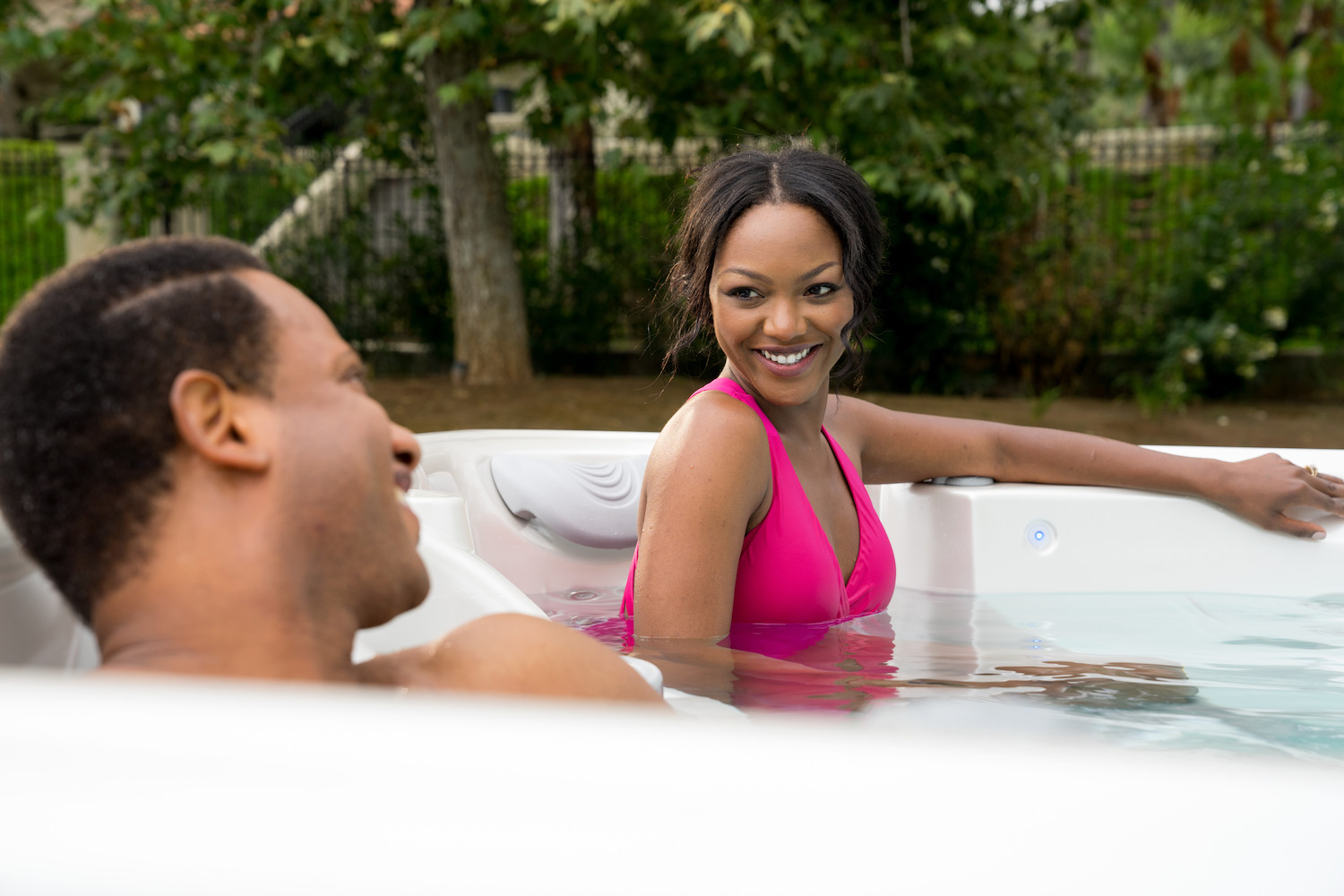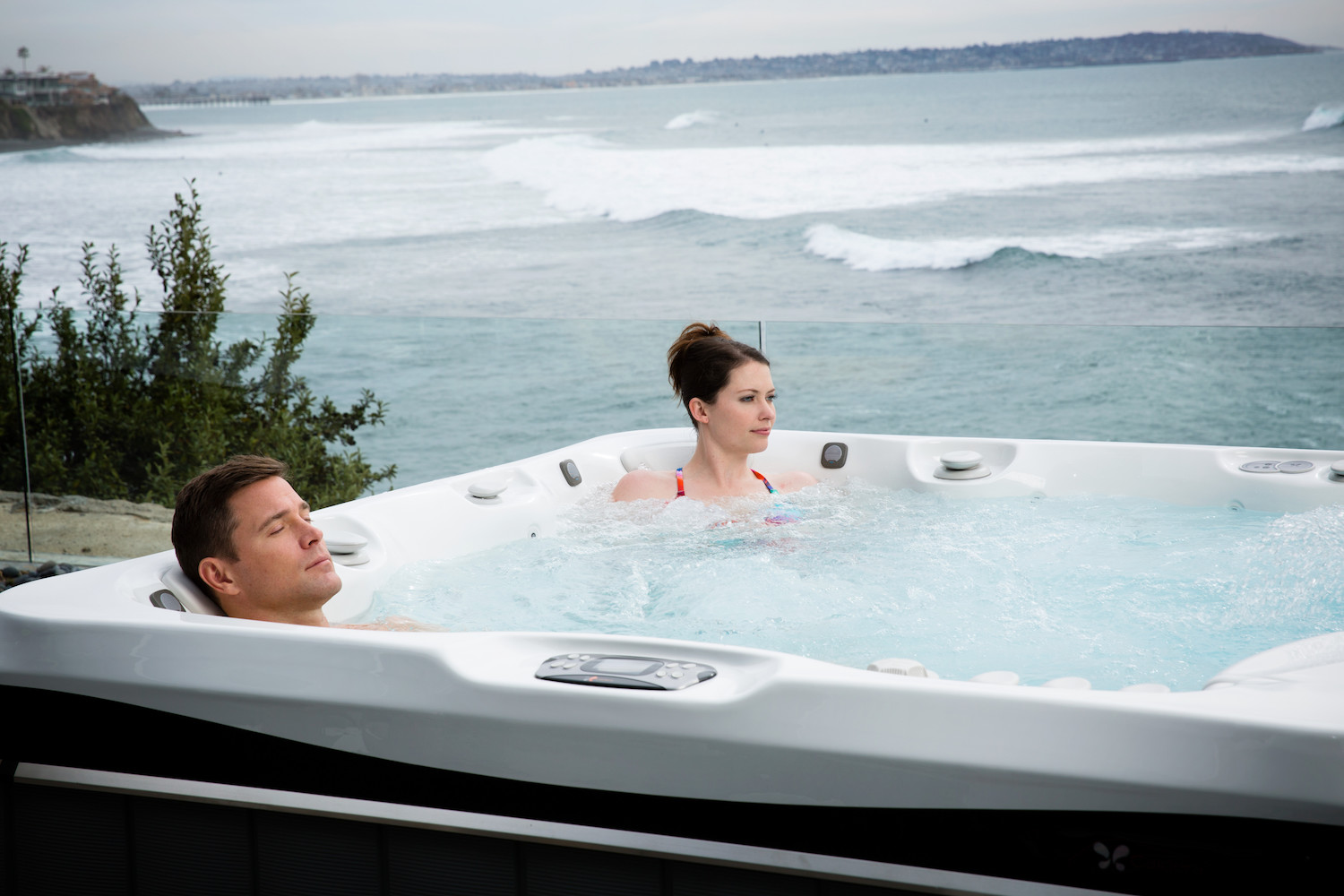Responsibility is often a source of joy. The daily care you provide to your family and home adds structure to your life, joy, and a sense of well-being. Those same feelings can even come from the care of items that add value to your life. Think of cellists caring for their instruments, or of author Robert M. Pirsig's Zen and the Art of Motorcycle Maintenance. One of the many benefits of owning a hot tub is the opportunity to care for it, even in simple ways, such as maintaining the purity of your spa water on a routine basis.
Spa water can be purified using a chlorine, bromine, salt water, or ozone system, each of which has unique attributes. While chlorine is effective and costs little, it can be harsh on skin and sensitive areas of the body, including your eyes, nose, and throat, if you don’t balance your water correctly. The @ease® In-line System with SmartChlor® Technology, which is chlorine based, uses up to 75% less chlorine*, greatly reduces hot tub water maintenance, and comes standard on all Caldera® spas. The SPA FROG® In-line bromine system is a great alternative to chlorine for those with sensitivity issues.
A salt water system will cost more up front, but require less time for the hot tub owner in maintenance. Finally, an ozone purification system injects millions of ozone-saturated bubbles into spa water to eliminate contaminants and requires less upkeep than a chlorine or bromine system. This type of system is typically a standard feature of luxury spas, and even many premium-level spas.
Whether you already own or are looking to purchase a spa with a bromine system, we’ve compiled everything you need to know to make caring for your spa water simple.
*Compared to the minimum ANSI recommended chlorine or bromine level of 2.0 ppm for a hot tub.

What Is Bromine and How Is It Delivered to Spa Water?
Bromine is just as effective as chlorine at eliminating harmful, illness-causing germs in spa water when used in the correct amounts. However, it can be less irritating to the body than chlorine. Bromine also has the addedadvantage of increased stability in higher temperatures and wider pH ranges than chlorine. As a result, as conditions in your hot tub fluctuate, bromine will last longer as an effective sanitizer.
Many spas, including Caldera spas with the bromine and mineral-based FROG inline water system, treat water continuously by dispersing measured amounts of bromine from a replaceable cartridge. These spas allow you to dial-in bromine delivery by simply adjusting a dial.
Without an integrated bromine delivery system, you’ll have to rely on a more old-fashioned—but no less effective—method of adjusting the bromine level of your water: dispersing it manually.
Available from your local spa dealer or online, bromine can be added to your water via the convenient cartridge-based FROG delivery system or a floating feeder. Follow the bromine package instructions, which should detail the concentration level of the bromine and include a table showing how much to add to achieve the desired effect in various levels of water. If you have any concerns, ask your dealer to help you determine the right amount of bromine for your specific spa.

Testing Bromine Levels
The level of bromine in your spa water will vary, depending on how often you use your spa and the time it sits uncovered, exposed to sunlight and dew. The recommended amount of bromine to use in spa water is 1 to 3 parts per million (ppm).
To determine the current level of bromine in your hot tub water, use a bromine test kit available from your local spa dealer. Follow the instructions on the package and be sure to ask your dealer any questions you have about the water purification process. Once you know how much bromine is currently in your spa water, you’ll know exactly how much to add, or to what extent you might need to dilute it. By testing your water once a week, you’ll be able to properly adjust to maintain purity.

Adjusting Bromine Levels in Your Hot Tub
The best way to adjust your spa’s bromine level is gradually: When low, dial up delivery a little; when high, wait longer than usual before adding more bromine. If accidental over spills occur when administering bromine, or if you miss a week of testing, you might have to make a major adjustment.
Raising the bromine level from a low point is simple— just add the appropriate amount. Reducing the level, however, is a little more difficult. The best way to reduce bromine concentration is to allow the bromine to outgas, or evaporate, naturally over time. If, however, you want to lower the level more quickly, you can dilute it by draining some water from the spa or removing a few gallons using a bucket, and then replacing it with fresh water. Run the hot tub, and wait a while to let your water mix and settle (the exact wait time will depend on water volume, amount of bromine in the spa, and the power/capacity of your pump). Then, test the water again. If testing shows the bromine level is still too high, repeat the process.
You can also lower the bromine level by adding a neutralizing chemical, such as sodium thiosulfate, to the water. Neutralizers are available online, but it’s best to purchase from a local dealer, who you can consult before adding extra chemicals to your spa. It’s preferable to avoid adding neutralizers, because extra chemicals will complicate the balancing process and may alter other characteristics of your spa water, such as pH, alkalinity, and calcium hardness.
Very little maintenance is required to keep your spa water crisp and clean with bromine. Make it a part of your weekly ritual, like watering the garden or filling the bird feeder, and your work will reward you every day with a warm, relaxing soak in your own home spa.
At Caldera Spas, we love to help you enjoy blissful spa experiences. To learn more about our spas and water care products, download our brochure. To see our spas in person, or learn more about the spa you own, visit your local dealer. If you’re interested in bringing home your own hot tub, get local pricing.
